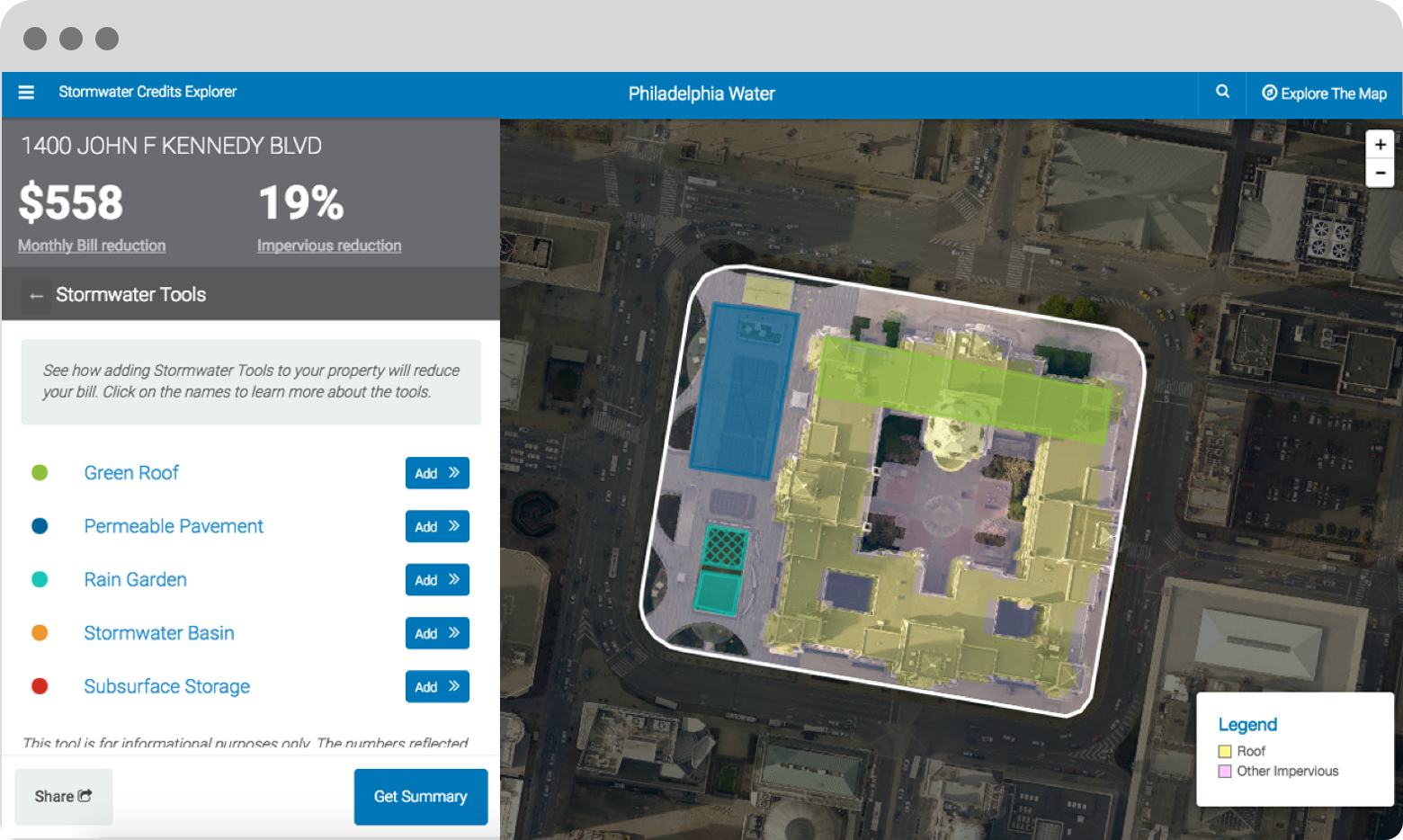“Green City, Clean Waters” is Philadelphia’s 25-year plan to transform the health of the City’s creeks and rivers primarily through a land-based approach. By implementing green stormwater infrastructure systems such as rain gardens and stormwater planters, the City is hoping to reduce water pollution impacts while improving natural resources and making neighborhoods more beautiful.
As part of this significant plan, the Philadelphia Water Department (PWD) wanted to create a collection of management practices and systems that private property owners could implement to reduce the amount of runoff coming from their properties. The systems work by either diverting stormwater runoff to an area where it can either slowly soak and infiltrate to the ground, or be stored until it can be released back into the sewer system when the load is lower, reducing the risk that there will be an overflow. Property owners who install and maintain these systems receive credits to their monthly stormwater charge for the reduced runoff.
We helped design the billing system that PWD uses to manage this program, and also created the PWD Stormwater Billing Parcel Viewer, which enables customers to get a detailed assessment about the impervious makeup of their property and a breakdown of the various components that go into their bill. With this knowledge, an experienced engineer or PWD employee can calculate potential savings to help a customer to decide if a project made sense for their property.
But the Philadelphia Water Department wanted to make this process easier and more straightforward for customers, from basic education about the program, to information about installing stormwater reduction systems, to understanding exactly how these systems can reduce the monthly stormwater charge.
We built the PWD Stormwater Billing Credits Explorer was built to do just that.
The application turns any non-residential property into a canvas where a user can sketch out ideas of up to 5 different types of “Stormwater Tools”, including Green Roofs and Rain Gardens, Permeable Pavers and different types of storage basins. The tools enable users to lay out potential changes while keeping realistic limits for that given property. As Stormwater Tools are added or removed, the application updates the monthly stormwater charge for that property. Users can rapidly get a sense of the feasibility and effectiveness of adding stormwater infrastructure systems.
